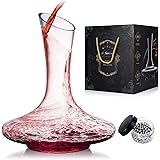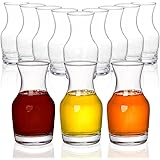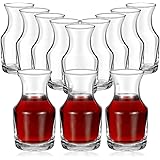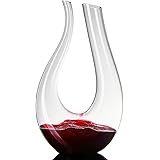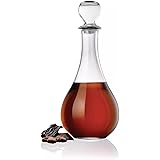Unlocking Nuanced Wine Pairing: Beyond the Protein, Into Food Chemistry
The art of wine pairing often feels shrouded in mystery, leading many enthusiasts to rely on overly simplistic axioms. We habitually reach for a white wine with fish and a red with steak, a practice not inherently wrong but one that barely scratches the surface of true gastronomic synergy. The insightful video above introduces a revelation cherished by seasoned restaurateurs and winemakers alike: the magic in pairing lies not merely in the primary ingredient, but profoundly within its preparation, seasoning, and textural nuances. This shift in perspective transforms pairing from a rigid rulebook into an exciting exploration of food chemistry, allowing us to orchestrate truly sublime dining experiences.
Understanding this deeper stratum of interaction means appreciating how a dish’s acidity, richness, or specific flavor compounds will chemically react with a wine’s inherent structure. It’s an intricate dance where components either harmonize and elevate or clash and diminish. The real secret to masterful wine pairing, therefore, pivots on dissecting these culinary attributes, making the choice of varietal less about the ‘color’ of the food and more about its ‘character’ on the palate. By delving into the sensory mechanics, we can unlock pairings that resonate with a refined elegance, turning every meal into a memorable occasion.
The Acidic Dance: Why Zest Matters in Wine Pairing
The video vividly demonstrates the power of acidity, illustrating how a crisp, high-acid Italian Frascati can initially seem almost too sharp on its own. This initial perception of tartness, however, is precisely what makes such wines indispensable companions to specific culinary creations. When a mere touch of lemon prepares the palate, the same Frascati miraculously transforms, shedding its perceived harshness to reveal a brighter, more integrated profile. This phenomenon stems from our sensory system’s inability to process two sources of high acidity simultaneously, causing the wine’s acidity to recede in the presence of an even more potent acidic food.
High-acid wines, often characterized by their vibrant freshness and cleansing finish, are specifically engineered by nature and viticulture to complement foods of similar vivacity. Consider a Sauvignon Blanc from the Loire Valley, a zesty Albariño from Rías Baixas, or a dry Riesling from Alsace; these varietals embody that palate-awakening zing. Their inherent tartness cuts through rich textures and balances salty components, acting much like a squeeze of lime on tacos or a splash of vinegar in a hearty stew. This makes them ideal for dishes dressed with piquant vinaigrettes, marinated in citrus, topped with fresh, acidic tomatoes, or even cooked with white wine itself, ensuring a harmonious balance that cleanses and refreshes the palate between bites.
The Luxurious Embrace: Fat as a Friend to Fuller-Bodied Wines
Conversely, the video elucidates the counterpoint of richness, using a buttery California Chardonnay to showcase how fat can dramatically alter a wine’s perception. A barrel-fermented Chardonnay, with its lower acidity, higher alcohol, and often creamy texture from malolactic fermentation, can feel weighty and opulent in isolation. Yet, when juxtaposed with the melting unctuousness of butter, this wine undergoes a striking metamorphosis; it suddenly feels lighter, more vivacious, and strikingly refreshing. The fat coats the palate, providing a rich canvas against which the wine’s own opulent character finds a perfect textural foil.
This principle extends beyond simple butter to any dish boasting substantial richness or fat content, where the wine acts as a magnificent counterpart rather than a rival. Imagine a rich Viognier from Condrieu, a luscious oaked Semillon, or a full-bodied Pinot Gris, all possessing the textural generosity to stand alongside decadent fare. These wines excel with dishes sautéed in butter, wrapped in bacon, slathered in hollandaise, or brimming with cream sauces. The wine’s richness and often lower acidity embrace the fatty elements, preventing the dish from feeling heavy and ensuring a smooth, luxurious transition on the palate. Instead of clashing, they merge, creating a symphony of indulgent flavors and textures that elevate both components.
Beyond Acidity and Fat: The Full Spectrum of Food Chemistry
While acidity and richness are paramount, they are but two pillars in the grand temple of food and wine chemistry. The discerning palate also considers sweetness, which requires a wine sweeter than the food to avoid making the wine taste thin and sour. Tannins, the astringent compounds found primarily in red wines, famously bond with proteins in fatty foods, softening the wine and cleansing the palate of residual richness. Saltiness, a potent flavor enhancer, can soften the perception of a wine’s tannins and acidity, often making it seem fruitier.
Umami, the savory fifth taste, presents a unique challenge, as it can sometimes make dry wines taste metallic or bitter, suggesting a pairing with lower-tannin reds or savory whites. Finally, the heat of capsaicin from spicy foods requires wines with lower alcohol and some residual sugar to soothe the burn, rather than exacerbate it. Each of these elements contributes to the holistic interaction, shaping the complete sensory experience. Mastering these intricate dynamics allows sommeliers and home cooks alike to navigate the vast landscape of flavors with greater precision and artistry, ensuring that every sip and bite contribute to a harmonious whole.
Mastering the Nuance: Practical Pairing Principles for Every Palate
The true mastery of nuanced wine pairing transcends rigid dogma; it embraces the dynamic interplay of a dish’s true character and a wine’s inherent profile. Forget the outdated notion that a single protein dictates the entire selection process. Instead, analyze the dominant flavors, the cooking method, the sauces, and the overall textural richness or lightness of your food. Is there a squeeze of lemon or a dollop of cream? Does it feature fresh herbs or a rich reduction? These are the questions that truly guide an intelligent wine selection, empowering you to create pairings that delight and surprise.
Embrace experimentation, allowing your own palate to be the ultimate arbiter of success. Trust that your senses, once attuned to these chemical interactions, will instinctively lead you toward brilliant matches. Breaking free from conventional rules, you will discover that a lighter, brighter wine can perfectly cut through a delicate, rich sauce, while a more opulent, full-bodied wine can soften the edges of a robust, flavorful dish. This understanding is what separates the casual wine drinker from those who truly appreciate the sophisticated dialogue between food and wine, transforming ordinary meals into extraordinary culinary journeys.


